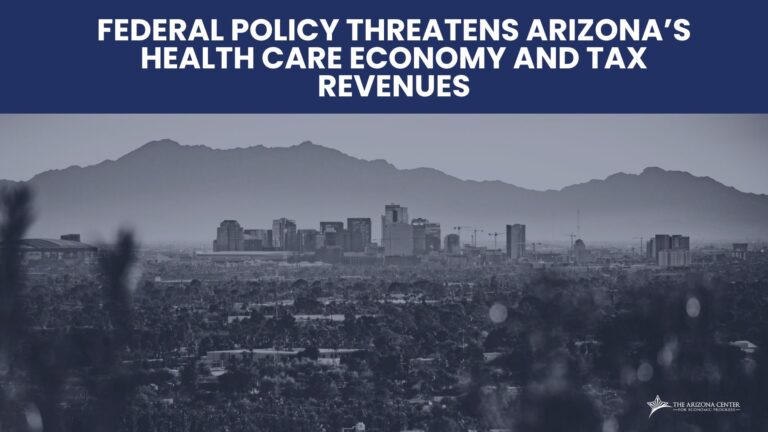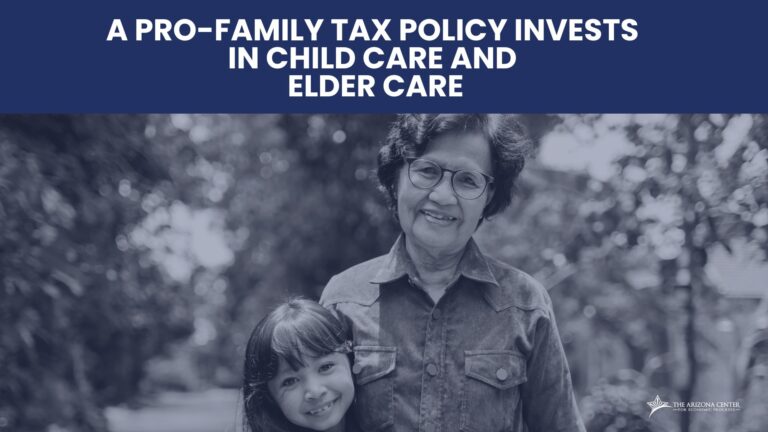
Expanded Child Tax Credit Positively Impacts Thousands of American Indian Children in Arizona
This post is the third in our online series on the expanded Child Tax Credit – featuring key section(s) of our full report. Click here to view our first entry on how the expanded Child Tax Credit empowers Arizona families with lower incomes.
The Child Tax Credit (CTC) was originally enacted as a part of the Taxpayer Relief Act of 1997 to help ease the financial burden that families incur when they have children. Over the past 20 years, the credit has significantly transformed from a generally nonrefundable credit available only to the middle and upper-middle class to a fully refundable credit that increased eligibility to more low-income families. This latest expansion of CTC was enacted through the American Rescue Plan Act (ARPA) in March 2021, as families continue to experience extreme hardship caused by the ongoing health and economic crisis caused by the COVID-19 pandemic.
The full child tax credit temporarily increased from $2,000 to $3,600 per child under the age of 6, and to $3,000 for older children. To qualify for the full expanded credit, heads of households may earn up to $112,500 or $150,000 for married couples before the expanded credit phases out.
For many Arizonans, this expansion could not have come at a more opportune time as nearly 2.4 million Arizona households have had at least one member who had lost employment income since the beginning of the pandemic.1 The economic impact of this historic employment loss has had a disparate impact on Arizona Tribal citizens.
Tribal households have struggled to weather to the pandemic largely due to systemic inequities created by a history of failed government policies, including inadequate healthcare delivery, a lack of housing, and underdeveloped infrastructure. Households with children were more likely to experience job loss and hardship, exhibited by higher rates of food insufficiency and housing instability, infection rate four times higher than that of other populations, and an inability to pay for usual household expenses.2
Lechee, Arizona is situated on the northwest corner of the Navajo Nation and only minutes away from Page, Arizona. Each year, more than 4 million visitors travel to Antelope Canyon to see the famous red-orange sandstone formation and walk through the narrowing cracks. To many people in that region tourism is a major economic driver and the source of their livelihood. Therefore, in March 2020, when the world came to a halt and lockdown measures were implemented to protect and contain the spread of COVID-19, the economic side effects were deeply felt among families and communities dependent on Arizona’s tourism industry.
Olivia, an employee of a local Antelope Canyon tour business, is one of the many Arizonans that was affected by lockdown measures, which ultimately resulted in employment loss early in the pandemic. The hardworking Navajo mother of three struggled to make ends meet, relying on the limited federal stimulus checks and meager state unemployment benefits.
Now more than 18 months into the COVID-19 pandemic, Olivia is finally feeling financially stable thanks to the temporary Child Tax Credit. According to Olivia, these funds have allowed her to “catch up on bills that piled up when I was on unemployment and save some money for unexpected expenses for my children. Being able to count on these funds during such uncertainty has given me a sense of relief and allowed me to take care of my kids. It’s a great help, especially as a single mom.”
As a result, the newly expanded CTC can serve as an essential financial tool for Tribal households, where more than one in three (36%) AI/AN children were living in poverty before the pandemic. Today, the median family income of an AI/AN family is $45,369 in Arizona – more than $25,000 less than the statewide average ($70,158).
Due to the latest expansion, it is estimated that nearly 124,000 AI/AN children are now eligible to receive the full child tax credit in Arizona, an increase of 86,000 AI/AN children who were previously ineligible. Across the U.S., it is estimated that 1.5 million AI/AN children would benefit each year from a permanent expansion of the CTC.
Many Arizona families are like Olivia and have experienced the positive impact of the expanded CTC. It is an effective vehicle in reducing poverty and stabilizing households. In Arizona, AI/AN children would experience a poverty reduction of 46% if the child tax credit were to be made permanent. Prioritizing resources for Arizona Tribal families and children is a sound investment in Arizona’s long-term economic well-being.
Figures are rounded to the nearest 100 and may not sum to totals due to rounding. Children are under age 18 and are identified as American Indian or Alaska Native by the U.S. Census Bureau. Figures featured in the report are American Indian or Alaska Native alone or in combination. Figures include racial and ethnic categories that overlap; figures for American Indian or Alaska Native include individuals who identify as multiracial or people of Latino ethnicity. Latino includes all people of Hispanic, Latino, or Spanish origin regardless of race. Estimates for “American Indian alone” include a reduced estimate, 77,300 AI/AN children benefitting from the child tax credit and 524,000 nationally; 59,000 AI/AN children in Arizona who were previously ineligible for the credit, and 322,000 AI/AN children nationally. The rounded poverty reduction percentages are the same whether we define “American Indian or Alaska Native alone or in combination,” regardless of Latino ethnicity or “American Indian or Alaska Native alone, not Latino.” Analysis by Center on Budget and Policy Priorities (CBPP) of the March 2019 Current Population Survey (CPS) allocated by state and Tribal Nation or Tribal grouping based on CBPP analysis of American Community Survey data for 2016-2018.



